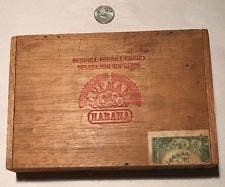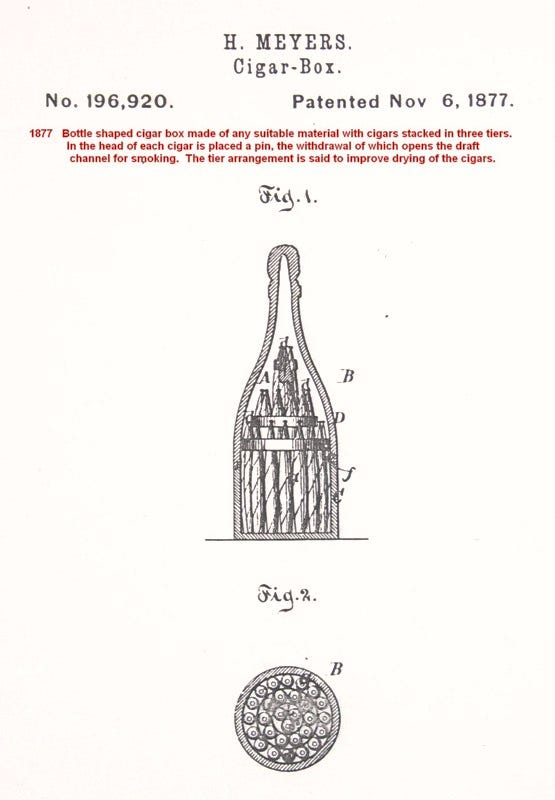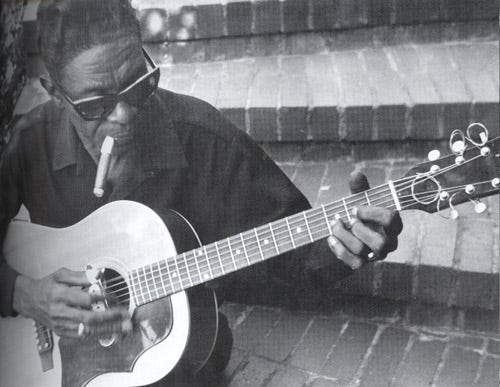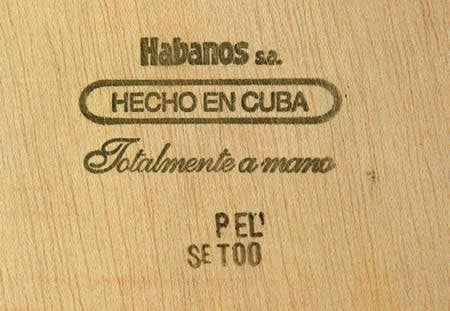
5 Things You Need to Know About… Cigar Boxes
Cigar Boxes: 5 Things You Need to Know
by John Pullo
The Cigar box. Some are very plain (Rocky Patel Cuban Blend), others are very glamourous (Fuente Opus X, and anything by Gurkha); our eyes are drawn to them, and our mind is drawn to form an idea about the quality of the premium cigars inside. Conversely, if you’re buying a luxury-class cigar, there is an expectation that the packaging lives up to the brand image. But though they’re equal parts storage unit and marketing tactic, cigar boxes have an interesting backstory all their own.
Whether it’s because of their practicality, utility or our general hoarding mentality, cigar boxes also tend to live on long after the smokes inside are gone. While it’s true many get busted up and thrown away, it’s not uncommon for us smoker types to repurpose them into Spanish cedar junk drawers that hold everything from spare cheapo cigar cutters, matches and smoking accessories, to screws, paper clips and whatever other crap that’s scattered across your workbench or desk. Boxes of all styles can be, and have been, upcycled countless ways – from furniture to musical instruments – but beyond the basics, there are a few things I bet you didn’t know that were unique to cigar boxes, and what makes them shine.
Not all boxes are created equally, of course – or even by the cigar manufacturer whose handmades are inside. For instance: those tasty Perdomo Champagne Sun Grown and 20th Anniversary Maduro cigars made at Tabacalera Perdomo are packaged in a house-made supply of boxes, as Nick has his own cigar box factory on the premises. He considers the box to be a part of the artful process, carefully crafted under his watchful eye – just like his cigars. Drew Estate, however, does not; many of their boxes are sourced from the same small Nicaraguan company with whom Jonathan has loyally been doing business since he co-founded DE.
So even though it’s the tasty morsels inside the box that capture our attention, shift gears and take heed of the box itself. And here are 5 things to think about while you do:
1. The First Cigars in Boxes Were H. Upmann.
Yes, it was the brothers Upmann – purportedly – that were the first to package their cigars in a box; but interestingly enough, those very first cigar boxes didn’t have Upmann cigars in them. That’s because there wasn’t an H. Upmann brand to be had…yet.

The Upmanns were a family of German bankers; sometime around 1840, brothers Herman and August Upmann convinced their father that it would be a grand idea to open a bank branch in Cuba. Herman, it seems, doubly benefitted from the deal: not only was the bank a success from the start, but as this Upmann brother was quite the cigar enthusiast – his relocation to Havana was a no-brainer. Shortly after, Herman began sending cigars from various Cuban factories back home to Europe. They would be packaged in cedar boxes, stamped with the bank’s name, and given as gifts to his most influential clients, as well as for marketing purposes. In just a few short years Upmann was immersed in cigar exporting, and by 1844 had invested in a factory to produce his namesake H. Upmann cigars. The bank would go on to fail by the 1920’s; the cigar venture did too, until it was purchased from bankruptcy.
2. Cigar Boxes Were Mandated by American Law in 1863.
American were blazing through their smokes at a furious rate in the mid to late 1800’s, and the number of stateside factories were growing by the day. There also wasn’t much government regulation regarding the manufacture of cigars at the time – so in an effort to have at least some semblance of rules, the US government decided to lay out a set of strict guidelines in how cigars were to be made, packaged and sold. Cigar makers were already selling their goods in smaller boxes (like Upmann) – but in 1863, the packaging of cigars in boxes was made mandatory. According to Tony Hyman at cigarhistory.info, the already-strict rules would be again amended within the next 24 months to limit the contents of a box to 25, 50, 100, 250 or 500 cigars. The materials used for boxmaking were regulated as well: only cigar boxes made of glass and/or wood were permitted. Tin boxes were eventually allowed a few years later; but by 1878, laws had been relaxed to allow for novelty stogie packaging. Since then, creativity and ingenuity have reigned – resulting in boxes made from cardboard, plastic, metals such as aluminum and brass, ceramics, leather, and combinations thereof.

With hundreds of cigars being packaged in a single box, it also made taxation somewhat more standardized – or easier, depending on your interpretation. Consider this: in 1804, the tax on sticks imported from the Caribbean or from Europe was $2/1000 cigars. Today, according to the US Treasury’s Alcohol & Tobacco Trade and Tax Bureau, that same lot of cigars is taxed at 52.75% of the sales price – with a cap of $402.60 per thousand.
3. Cigar Boxes Make Damn Good Instruments.
Now that cigar boxes were a legally required thing, the question arose about what to do with them once they were emptied. Credit our industrious forefathers for upcycling their cigarbage: even as early as the Civil War, soldiers were making fiddles out of them to pass the time in camp between marches and battles. As the American South was ravaged by deep poverty that lasted long after the Depression, so-called “primitive” instruments like the cigar box guitar – or cbg – became essential to the development of the blues movement. Artists had the skills to make the music, but not the coin to buy the real instruments. So they made their own, with found items. And considering how cheap cigars were at the time and how many were being produced, empty boxes were plentiful. Shane Speal, King of the Cigar Box Guitar and among the leaders of the current cbg revival, noted the historical importance of guitars and fiddles made from cigar boxes: “The Great Depression saw a resurgence of homemade musical instruments. Times were hard in the American south and for entertainment sitting on the front porch singing away the blues was a popular pastime. Musical instruments were beyond the means of everybody, but an old cigar box, a piece of broom handle and a couple wires from the screen door…and a guitar was born.”

Primitive though they may be, cbg’s have had a strong resurgence in the past decade or two – and attracted veteran players known more for their 6-string work. Ronnie Wood (the Rolling Stones) is using one on an album due in 2016. Paul McCartney played a slide cigar box 4-string while fronting the Foo Fighters on TV. Billy Gibbons of ZZ Top, Tom Waits and Ed King (Lynyrd Skynyrd) have played them. Buddy Guy got his start on a homemade 2-string “Diddley bow,” and Blind Willie Johnson learned his craft on a 1-string – as did thousands more obscure and unknown musicians, who made that blues sound famous.
4. Cuban Cigar Boxes Have Secret Codes.
There is a lot to unpack here in just a little space, but I’m going to try to give you the broad strokes. When it comes to Cuban cigars, there is a bit of a science in figuring out what some of the stampings and markings mean, both in and on the box. Some will also be helpful in determining the age of a box, or its collectability if it is empty. A few things to look for:

Padrón’s coding system use(d) a combination of numbers and letters – some of the code ID’d the factory where that specific box was made, other digits and letters were useful for internal reasons. That way, the factories had a quality control and tracking system that would allow them to identify production issues such as a bad lot of tobacco or defective smokes – or, to keep a watchful eye on which boxes were being filled with cigars rolled with certain tobacco crops harvested in particular years, as leaf quality could change from year to year. Sound like you need a secret decoder ring to figure it out? That’s on purpose: the codes and systems have changed countless times in an effort to hamstring the efforts of counterfeiting Cuban cigars.
5. You Can Keep Cigars in A Sealed, Wrapped Box for Longer Than You Think.
We get this question fairly often here at Cigar Advisor: “How long you can keep cigars in a sealed and wrapped box?” A good question to ask, especially if you’re buying cigars as a gift – and that special occasion is a few weeks off. But there are a couple critical care steps involved in keeping cigars fresh for the long haul, outside of the humidor.
If you don’t have a way to store the cigars appropriately, you can get away with it for about a month before the cigars start to dry out – even with that outer cello wrapper. At 45 days, you’re pushing the envelope; any longer than that, your next search will be “how do I re-humidify dry cigars?” The natural oils in the tobacco will have dried out, along with the flavor – and the smokes inside will never have had the chance to live up to their delicious potential.
That’s 5 more things you know about cigar boxes. Whether you use ‘em to win a bar bet or use them to your cigar smoking advantage, knowledge is power. Enjoy!